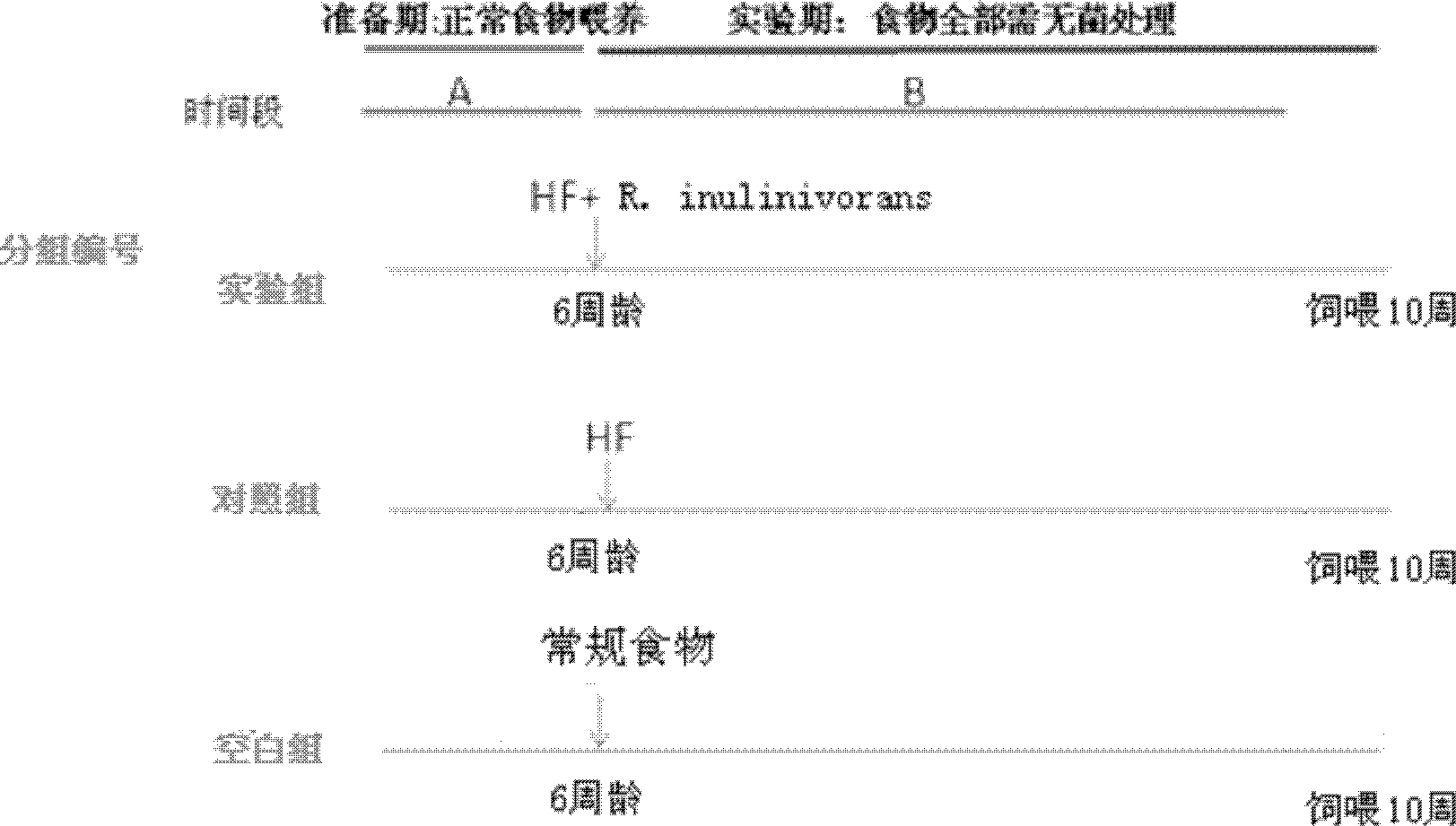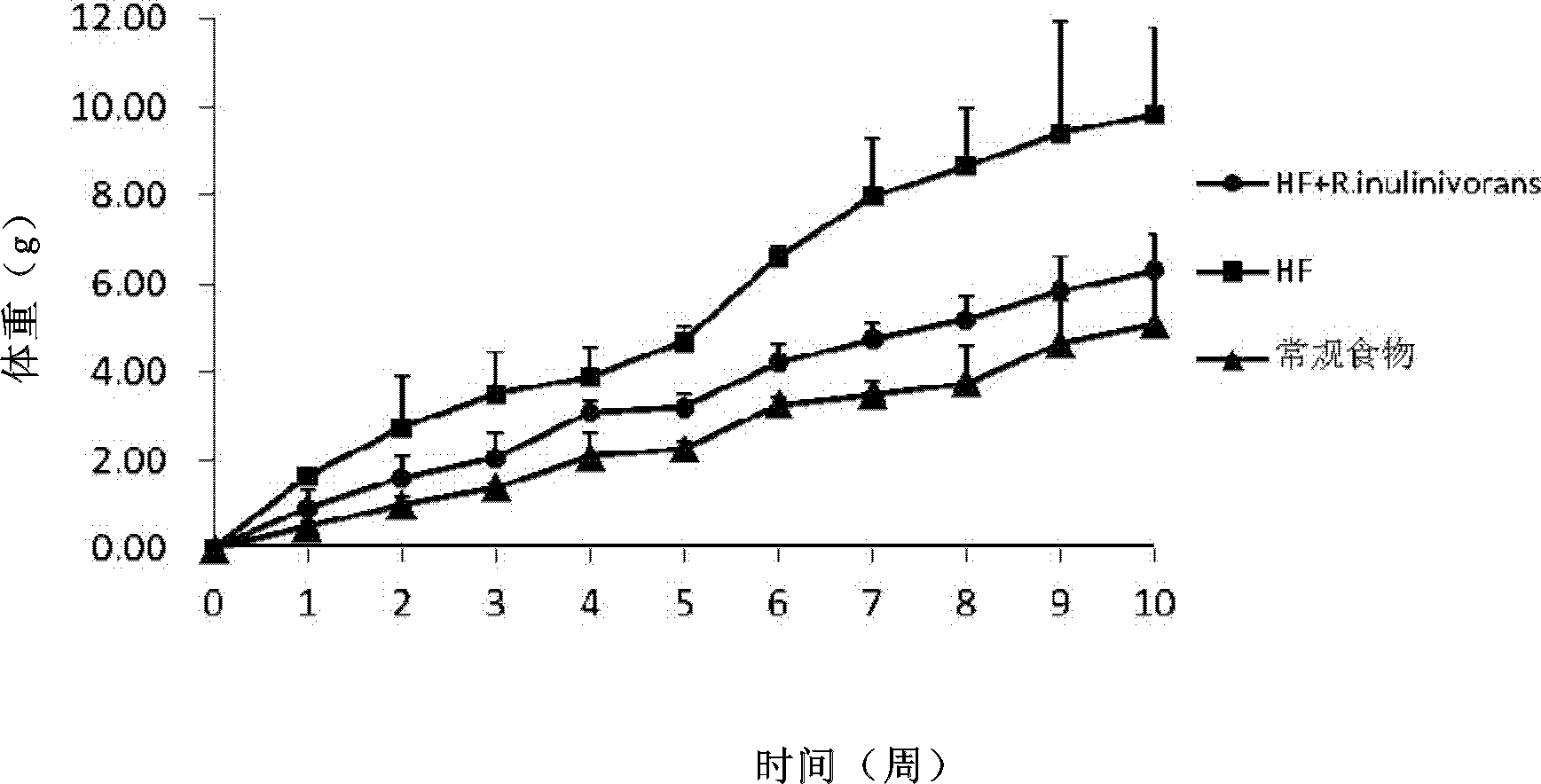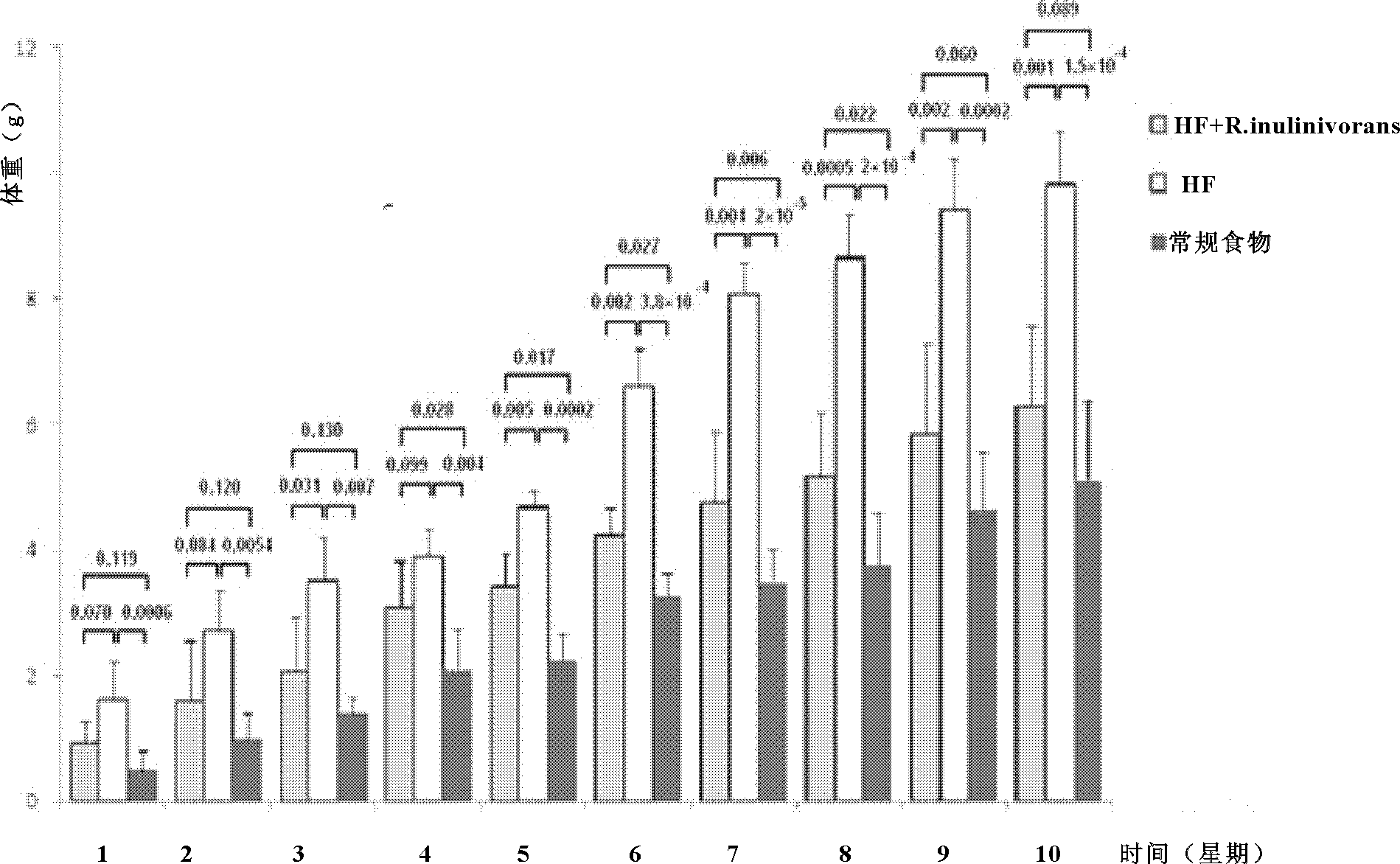Application of Roseburia to treatment and prevention of obesity related disease
A Rosella, purpose-built technology for use in microbiology that solves problems of expensive, miscalculated, immune-resistance
- Summary
- Abstract
- Description
- Claims
- Application Information
AI Technical Summary
Problems solved by technology
Method used
Image
Examples
Embodiment 1
[0068] Experimental Materials
[0069] Mice: C57BL / 6J mice (purchased from the Experimental Animal Center of Southern Medical University) were purchased, which were normally raised mice, 6 weeks old, with a total of 15 mice. Mice were grown in the same environment and fed the same food.
[0070] Strain: Roseburia inulinivorans DSM 16841 strain, purchased from DSMZ (Deutsche Sammlung von Mikroorganismen und Zellkulturen GmbH).
[0071] High-fat food (HF): 58% lard, 25.6% carbohydrate, 16.4% protein, purchased from Beijing Huafukang Biotechnology Co., Ltd.
[0072] Conventional mouse chow: purchased from the Animal Experiment Center of Southern Medical University.
Embodiment 2
[0074] Mice grouping and induction treatment
[0075] In this example, a total of 3 experimental groups were set, with 5 animals in each group.
[0076] 6-week-old C57BL / 6J mice that were normally fed (without sterility) were selected for the experiment. The Rothella DSM 16841 bacteria to be tested were introduced into the intestinal tract of mice by feeding method, and the insulin resistance ability of mice was identified by glucose tolerance (OGGT) test.
[0077] For specific experimental grouping information and processing steps, see figure 1 .
[0078] The 15 repurchased mice were kept in the same environment until 6 weeks of age (the food did not need to be sterilized), the feeding amount was recorded, and the weight change and physical condition of the mice were regularly monitored.
[0079] The 15 mice were equally divided into 3 experimental groups (5 mice in each experimental group), placed in the ultra-clean workbench, and officially entered the experimental period....
Embodiment 4
[0084] Experimental results:
[0085] 1. The results of body weight gain of mice fed for 10 weeks are shown in Table 1 and figure 2 .
[0086] Table 1
[0087]
[0088] 2. The results of the comparison of the P value of the difference in body weight gain of the mice fed for 10 weeks are shown in Table 2 and image 3 .
[0089] Table 2
[0090]
[0091] From Table 1, Table 2 and figure 2 , image 3 It can be seen that feeding the test bacteria for 10 weeks can significantly reduce the body weight of obese mice.
[0092] 3. The measurement results of blood glucose content in the 10th week of feeding are shown in Table 3, Table 4 and Figure 4 , Figure 5 .
[0093] table 3
[0094] grouping
[0095] 1.
[0096] Table 3 and Figure 4 It is shown that feeding the test bacteria can significantly reduce the blood sugar of obese mice.
[0097] Table 4
[0098] P value
[0099] Table 4 and Figure 5 It was shown that feeding the te...
PUM
 Login to View More
Login to View More Abstract
Description
Claims
Application Information
 Login to View More
Login to View More - R&D
- Intellectual Property
- Life Sciences
- Materials
- Tech Scout
- Unparalleled Data Quality
- Higher Quality Content
- 60% Fewer Hallucinations
Browse by: Latest US Patents, China's latest patents, Technical Efficacy Thesaurus, Application Domain, Technology Topic, Popular Technical Reports.
© 2025 PatSnap. All rights reserved.Legal|Privacy policy|Modern Slavery Act Transparency Statement|Sitemap|About US| Contact US: help@patsnap.com



